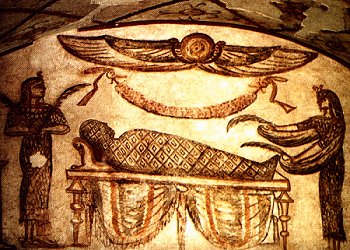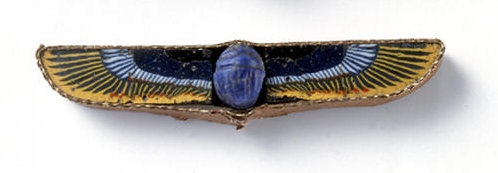|
Egypt Winged Flying Craft or Angels? |
|||
|
|||
|
Kom el-Shugafa, Alexandria
If Nibiru made an appearance in the skies around the time of Christ, then this image is precisely the kind of thing we would expect to see daubed upon the catacomb walls of Graeco-Roman Egypt. by Andy Lloyd |
|||
|
Winged Disc
|
|||
|
Luxor, Egypt Above a doorway in
Rameses III's temple, the sun god uses
wings to protect us.
|
|||
|
|||
From comparative studies of Maya art, Dr. Maudslay arrived at the conclusion that the geometrical design above, and including the tail ( T ), represents a serpent’s head upside down – without the jaw. By comparison with Indonesian designs, the writer arrived at the same conclusion. The loss of the jaw in the conventionalization of the serpent occurred in India and was emphasized in Java (Fig.49), and in that form adopted in America. |
|||
| FAIR USE NOTICE: This page contains copyrighted material the use of which has not been specifically authorized by the copyright owner. Pegasus Research Consortium distributes this material without profit to those who have expressed a prior interest in receiving the included information for research and educational purposes. We believe this constitutes a fair use of any such copyrighted material as provided for in 17 U.S.C § 107. If you wish to use copyrighted material from this site for purposes of your own that go beyond fair use, you must obtain permission from the copyright owner. | |||
|
|







